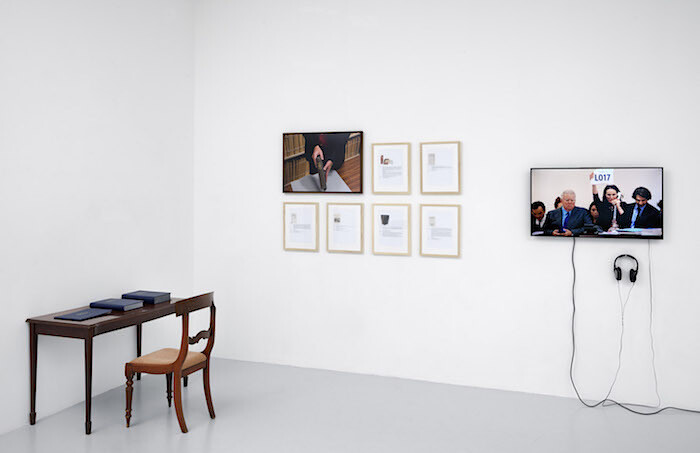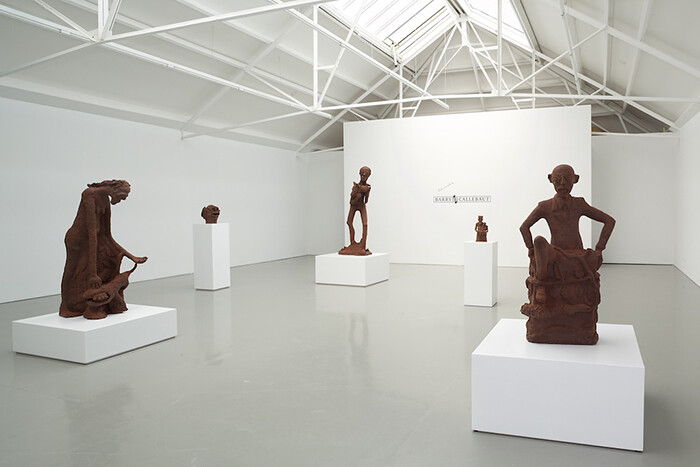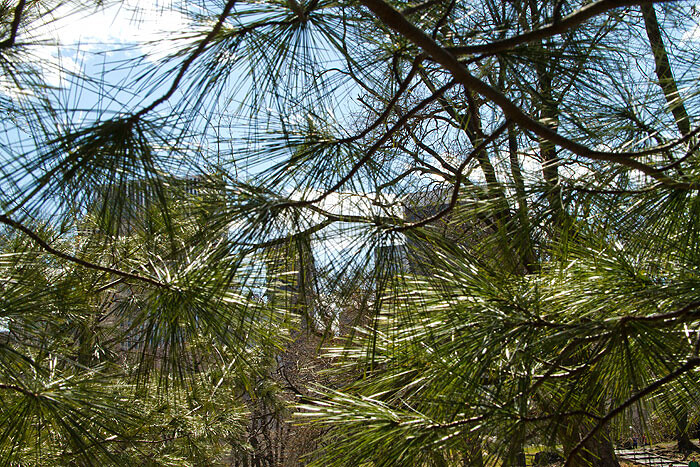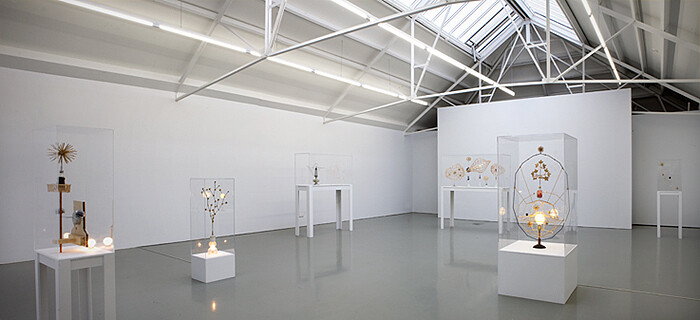Categories
Subjects
Authors
Artists
Venues
Locations
Calendar
Filter
Done
February 17, 2017 – Review
“Where do we go from here?”
Vivian Ziherl

As 2017 opens there is a sense that all bets are off—that it is time to roll the dice and keep a hand open to all possibilities. Perhaps this is all the more so in the Netherlands—in many ways the closest of the EU countries to Britain and perhaps facing its own democractic crisis with a fractious election ahead in mid-March. In a sense this is both the mood and the motive behind a new joint venture by six Amsterdam art galleries and their opening project, titled “Where do we go from here?” As far as gallery experiments go, the basic premise of trading in the art commodity remains unaffected. Nevertheless, within these limits something quite bold is taking place. This joint venture tries out a new, collectivized form of trading, possibly marking a turn towards locality within the art market and the cultural climate more broadly.
The project takes the form of a synchronized exhibition, with works selected from the galleries’ represented artists and arranged by invited curator Alessandro Vincentelli (Curator of Exhibitions and Research, BALTIC Centre for Contemporary Art, Gateshead). Hot on the heels of the evermore successful Amsterdam Art Weekend in November, “Where do we go from here?” …
May 27, 2015 – Review
Renzo Martens and the Institute for Human Activities’ "A New Settlement"
Vivian Ziherl

“The missionary went on to talk about the Holy Trinity. At the end of it Okonkwo was fully convinced that the man was mad. He shrugged his shoulders and went away to tap his afternoon palm-wine.” So begins the tragic encounter between the fictional Igbo Chief Okonkwo and the religious men who are the harbingers of colonial power to his region of British Nigeria, as told in Chinua Achebe’s novel Things Fall Apart (1958). The tale portrays, like no other, the foundational role of missionaries in statist imperialism. Here, the religious re-ordering of family, knowledge, and moral worlds is marked out as the true devastation of colonialism, enacting a destruction that exceeds that of imperial firepower.
It is just such a missionary figure that Dutch artist Renzo Martens has fashioned himself as over the past half-decade, most recently with his collective project the Institute for Human Activities, and the exhibition “A New Settlement” at Galerie Fons Welters in Amsterdam. Across six large chocolate sculptures, two small chocolate-sculpture editions, three videos, roughly a dozen photos, and other accoutrements, the “new message” of Martens’s “new settlement” is an evangelism of cultural capital. The claim is that gentrification—as the true product of art—may offer …
May 21, 2013 – Review
Gabriel Lester’s “The Secret Life of Cities”
Judith Vrancken

The lust to be a “totalizing eye” immediately sprung to mind when walking into Gabriel Lester’s “The Secret Life of Cities.” It’s one of the key notions expressed in Michel de Certeau’s chapter “Walking in the City” that “the fiction of knowledge is related to [the] lust to be a viewpoint and nothing more.” But as de Certeau’s title suggests, he prefers walking in the city whereas Lester apparently enjoys the hidden refuge of its shrubbery. Taken in Shanghai, New York, Sharjah, and Dubai, Lester’s images are all are shot in the midst of city park bushes. Despite the great distinctions between these metropolises, Lester’s photographs leave the cities to an uncertain anonymity, showing no signs of exceptional cultural identity. In the photographs—seven in total and named in a variation on the show’s title (for example, The Cities of Secret Lives)—the cityscapes rise in high rectangular and jagged lines above the occasionally exotic looking thicket. City soundtracks from the video projection on view in another part of the space penetrate the gallery’s front room so that it cleverly creates a sense of three-dimensionality when taking in the photographs.
The eponymous two-channel video installation consists of two screens opposing each other. A …
July 27, 2011 – Review
Björn Dahlem’s "The Unknown"
Tyler Coburn

The past month brought another turn to the space race, as the closure of NASA’s cash-strapped, shuttle program made more room for Chinese, Indian, Russian, and even commercial enterprise. With twenty-nine private companies presently vying for Google’s $30 million, Lunar X prize, we are well on the verge of the next wave of invention—and an unprecedented scale of speculation.
Such a reinvigorated, cosmic drive may account for why Björn Dahlem’s current exhibition at Fons Welters feels decidedly out-of-step. Contrary to its titular claim, “The Unknown” puts Dahlem’s practice in the well-trodden line of polymaths like Johannes Müller, Immanuel Kant, Johannes Kepler, and even Aristotle, who, in their respective ways, proposed hybrid models of existence that drew from disciplines like science, mathematics, philosophy, religion, and psychology. Dahlem reprises this figure as an amateurish bricoleur, tinkering away with found objects, wood, and metal tubing on model-size sculptures that take their names from the astronomical lexicon, yet are neither strictly illustrative in form nor, as with a Leonardo, propositionally functional designs. Rather, these works endeavor to constellate the viewer by laying out immanent prompts that, in their material insubstantiality, stimulate extended contemplation.
The rock crystal-covered TV antenna in Hintergrundstrahlung (“Background radiation”) (2011) and the barometer …